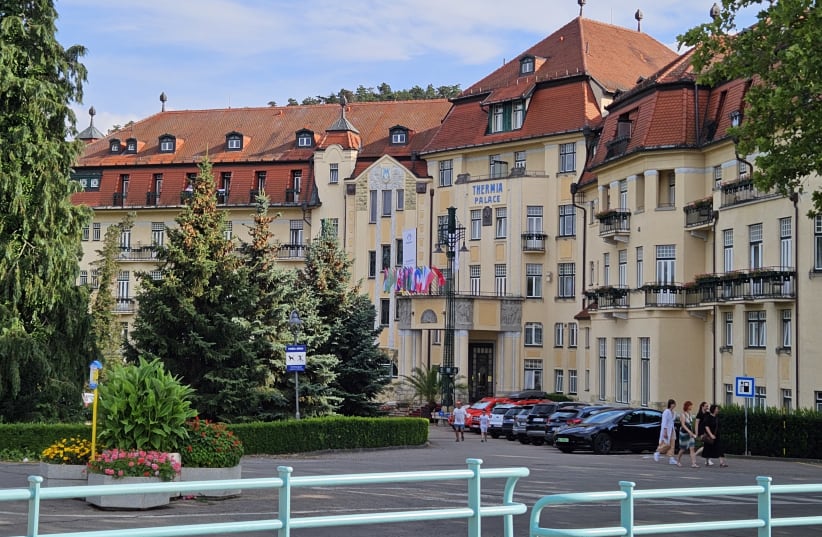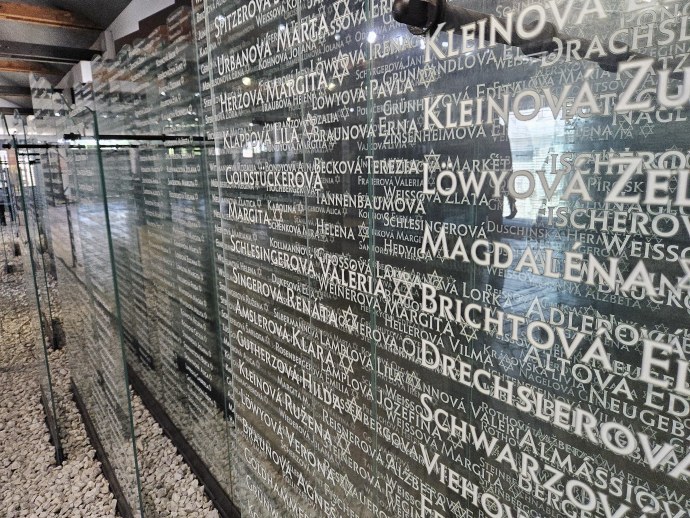The Trnava region of Slovakia resembles many other areas of Central Europe – large swaths of agricultural land and rolling hills always somewhere on the horizon. But the welcome is as warm as any in Europe.
The regional capital is beautiful Trnava but it’s to Piestany that most visitors are attracted. It’s a compact place divided by the broad, majestic Vah river. On the western side lies the cute small city center with pedestrianized areas and a focus on the arts: opera, theater (in Slovak), and excellent jazz. The opposite bank is dominated by Slovakia’s largest spa resort: a series of hotels built on an island over a springhead spouting sulphur-rich water that rises from some 2.4 km. below the surface.
The main hotel, The Thermia Palace, was dreamed up by Jewish-born entrepreneur Ludovit Winter more than 100 years ago. It offers 60 treatments and attracts visitors from around the Middle East including Saudis, Lebanese, and Israelis.
Indeed, Israelis are in the top three source markets for visitors to Piestany. That’s in large part thanks to a major marketing campaign by Trnava Regional Tourism Board and seasonal direct Arkia flights from Tel Aviv into Piestany Airport, just five minutes from the city center.
Vienna airport is less than a two-hour drive away, with rail services connecting the Trnava region with the rest of Europe.
Just half an hour from Piestany lies Vrbove. For many visitors, it’s a place you would likely drive through. But thousands of Jewish tourists head to a run-down building on main street. The Vrbove synagogue is 140 years old in 2023. Jews arrived in the town fleeing from Moravia in the 17th century. Jerusalem’s famed chief rabbi, Yosef Chaim Sonnenfeld, came from Vrbove. By the end of the 1800s, the community comprised one-third of the population, but with the town’s decline, many Jews moved to Piestany, Trnava, and elsewhere. By 1939, they numbered some 600. Only 80 returned after the Shoah.
The synagogue was used as a storehouse during the war and then as part of a textile factory complex. The building was fully purchased by the municipality in 2016, which is now fundraising to pay for its restoration. Jewish groups can visit the building by prior approval.
The old Orthodox synagogue in Trnava city shows what can be done to restore a shul building to its former glory. While the Jewish community is tragically long gone, the synagogue has been lovingly restored, with the aron kodesh (holy ark) still in place and the bimah (prayer platform) space respectfully empty. All around where the males would have congregated to worship are unostentatious booths for diners in the Synagoga café.
Photos of the synagogues of Vrbove and Trnava – almost identical in size and architecture – show what happened and what can be, thanks in plenty to the locals, in both cases.
There is also a Reform synagogue in Trnava, converted into a gallery space.
Trnava is a strong church city. The restored city wall encloses the basilica on two sides. Many Catholic pilgrims visit the church because tradition says in a painting, Mary shed tears of blood.
Organized tours take you next door and below ground to the House of Bones – 14,000 of them from the Middle Ages, and just one complete skeleton, which the locals lovingly call Frankenstein.
No visit to the Trnava region for Jewish visitors would be complete without taking in the remarkable Sered Holocaust Museum. It is a no-holds-barred, government-run site that quite simply says that until the SS moved in in 1944, it was Slovak people who perpetrated some of the worst crimes against humanity on their own territory during World War II.
As museums go, this center, opened in 2016, is as painstakingly researched and designed as any other. The exhibitions fill four large barracks, where Jews were incarcerated and forced to work, killed, or deported. It tells of life in the camp, Slovakian Jewry before and after the “Final Solution,” and, importantly for museum management, the stories of the survivors after the war.
Celebrating hundreds of years of Jewish history and remembering the dark times are central to trips to Europe for many Jews but it is perhaps good for the soul to end a vacation on a sweet note.
And there is arguably nothing in the Trnava region that fits that bill more than the Vcelovina meadery in Smolenice, a hillside village in the shadow of a castle.
It started as a schoolboy fascination with beekeeping by a group of friends and has grown into an internationally acclaimed producer of mead honey wine and honey beer. The visitor center is nothing short of magical with stunning landscaping, a plethora of honey-based products and gifts, and a cafe serving up delicious goodies to pair with the wine and beer.
Tours of the center and production facility in English can be arranged by prior reservation. The staff are full of smiles and you will be too, after a glass or three of the sweet amber nectar.
Mark and David host The Jerusalem Post Podcast – Travel Edition . They were the guests of Trnava Regional Tourism Board and Visit Piestany.

